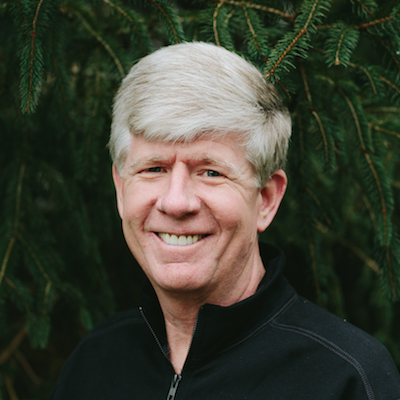As we continue talking about becoming a transformational leader, let’s move forward along this path of Transformational Leadership and the process of organizational development. As we do that, let’s talk about the qualities and skills of leadership, the definition of a good leader, and the purpose of leadership. Such discussions will help us see what organizational charts would look like if we had the answers to all those questions.
What Is Your Idea of a Good Leader?
First, let me ask you a question. What kind of leader would you want to follow? What are the desired qualities and skills of a leader that you would say if I had a leader like that I would quickly follow them?
If you will, stop for a few moments, think about the answers to that question, and then make a list of your own. List the desired qualities and skills of a leader. What qualities and skills would you come up with that would say this is who I would follow. When you finish, come on back, and let’s look at your list along with the list I’ll share with you. Then let’s see if we can come up with what makes sense that would cause us to say we would follow that person.
. . . . . . . .
First, thank you for taking the time to make a list of the qualities in the kind of leader that you would want to follow.
I also have a list of the kind of leader I would like to follow, as well as the kind of leader I try to be. This list is not all-inclusive. It’s just a partial list, but it will give you an idea of my thinking.
The Desired Qualities and Skills of a Leader
- Visionary
- Wise
- Caring
- Compassionate
- Good Communicator
- Integrity
- Humble
- Honest
- Consistent
- Approachable
- Decisive
- Good Listener
- Delegator
- Enthusiastic
- Empowering
- Good Sense of Humor
Let’s take a look at this list and compare it to your list and see what are the common characteristics we both put on our lists. Then let’s ask the question what if we had a leader who was visionary, caring, a good communicator, who walked in humility, was consistent in their style of leadership, decisive, a good delegator, able to empower others, and understood the difference between delegation and empowering. What if they walked with wisdom and were compassionate, with such integrity and honesty so that we never questioned their character, and that we knew they were of good character, approachable, a good listener, enthusiastic, and had a good sense of humor.
Would you follow a leader like that? If you were a leader like that and walked with those qualities and skills, would other people follow you? I believe the answer to both of those questions is yes.
What Is the Definition and Purpose of Leadership?
Let’s turn to another part of leadership. Let’s talk about a definition and the actual purpose of leadership. I have another question for you. Think for a moment about what you would be willing to do that others may not be willing to do to become that kind of a leader with these qualities and skills. Let’s take those qualities and skills we have identified and talk about the definition and purpose of leadership. And I’ll talk about the purpose of leadership with the acronym of VSTTEELE.
If you googled the word leadership, you would probably find over a million definitions of that word. What is a leader? What is the definition of leadership? But what is your definition? Maybe not what you are now or maybe not even anything you’ve seen. What is your definition of a leader that you would want to be, the kind that you would say if I did
this people would follow? What do you believe the real purpose of leadership is? Take a moment and think about that. Write down what you think the definition of leadership is, just a quick definition of what you would say leadership is or what a leader is and what is their purpose.
. . . . . . . .
Again, thank you for taking a moment to write down your definition and purpose of leadership. I wish I were in the room with you right now. I wish I were sitting there with you. I would love to read what you wrote. I love to see what other people think and feel about leadership.
The Definition of Leadership
Could I share with you what we believe is the definition in this fun thing that we do around the purpose of leadership? We believe that a leader is someone who is willing to lay down their life, who is willing to lay down their agenda, to serve those people they lead and with whom they have influence. When we say they are willing to lay down their life, we don’t mean they die. What we mean is they are willing to set aside their agenda to take on something far greater. What is that “greater”? This is that purpose of leadership we talked about, that we call VSTTEELE and lead. That’s a humorous way of saying how important VSTTEELE is in leadership.
The Purpose of Leadership
We sum up the purpose of leadership in the ideas of VSTTEELE. The V stands for Vision because that is the direction we want our teams to move toward, a vision. So the leader’s purpose is to cast a vision for their organization. Once that vision is cast, then what does the leader do? They move to the S. They Serve their people. They lay down their agenda to serve their people. How do they do that? Through the TTE. They Teach, Train, and Equip. Once our teams are taught, trained, and equipped, then the leader can go to the next E and Empower them. At that point, those teams are ready to go do what we need them to do and that they have a desire to do because they’ve bought into the vision. Once they are empowered, we then as the leader can then go to the L and Let Go. We can release them, let them go to do what they do. Then the leader comes to the final E where we Evaluate what it is they do.
Leadership gets a lot easier and a lot less stressful when we have teams who are empowered because we’ve taught, trained, and equipped them. We’ve given them the knowledge they need to do what they need to do, which gives them the sense and feeling that they can accomplish what they need to do, and that leads to their actual behavior in fulfilling their jobs and roles to go after that vision.
Let me ask this question about VSTTEELE because we get it a lot. What is the practical application of the VSTTEELE model? Think about a time you may have released someone you’ve worked with to go do something. It may be a child or an employee, but you released them to do it before they were taught, trained, and equipped. How did that go? How did it work? What did that do to your stress level? What did that do to their stress level?
And maybe there’s been a time you released somebody, you empowered someone after they understood what it was that you and they were going toward and you taught, trained, and equipped them. Compare those two stories in your mind and see which one was easier. Which one was less stressful? Then take a look at the VSTTEELE model and determine as a leader where you might be today. Where do you want to be? Are you a teacher, trainer, and equipped as a leader? Can you empower? Are you delegating before people are taught, trained, and equipped? If you are, you may be stressed, and they may be stressed.
That’s the practical application of leadership that uses VSTTEELE and how to think about that model and how to go through it on a daily basis. As people really focus on the model and see where they are and how they’re doing, we’ve found this material starts making sense to them as they run it through this VSTEELE spinal column of laying their agenda down, of laying their life down, of casting vision, and then to serve, teach, train, equip, empower, let go, and evaluate. AS we learn to walk out of this kind of leadership, we become the kind of leader others will follow and the kind of leader who is a transformational leader.
Ford Taylor is a leadership strategist, keynote speaker, and the author of Relactional Leadership. As the Founder of Transformational Leadership, he is known as a man who can solve complex business issues, with straightforward practical solutions, while maintaining his focus on people.



